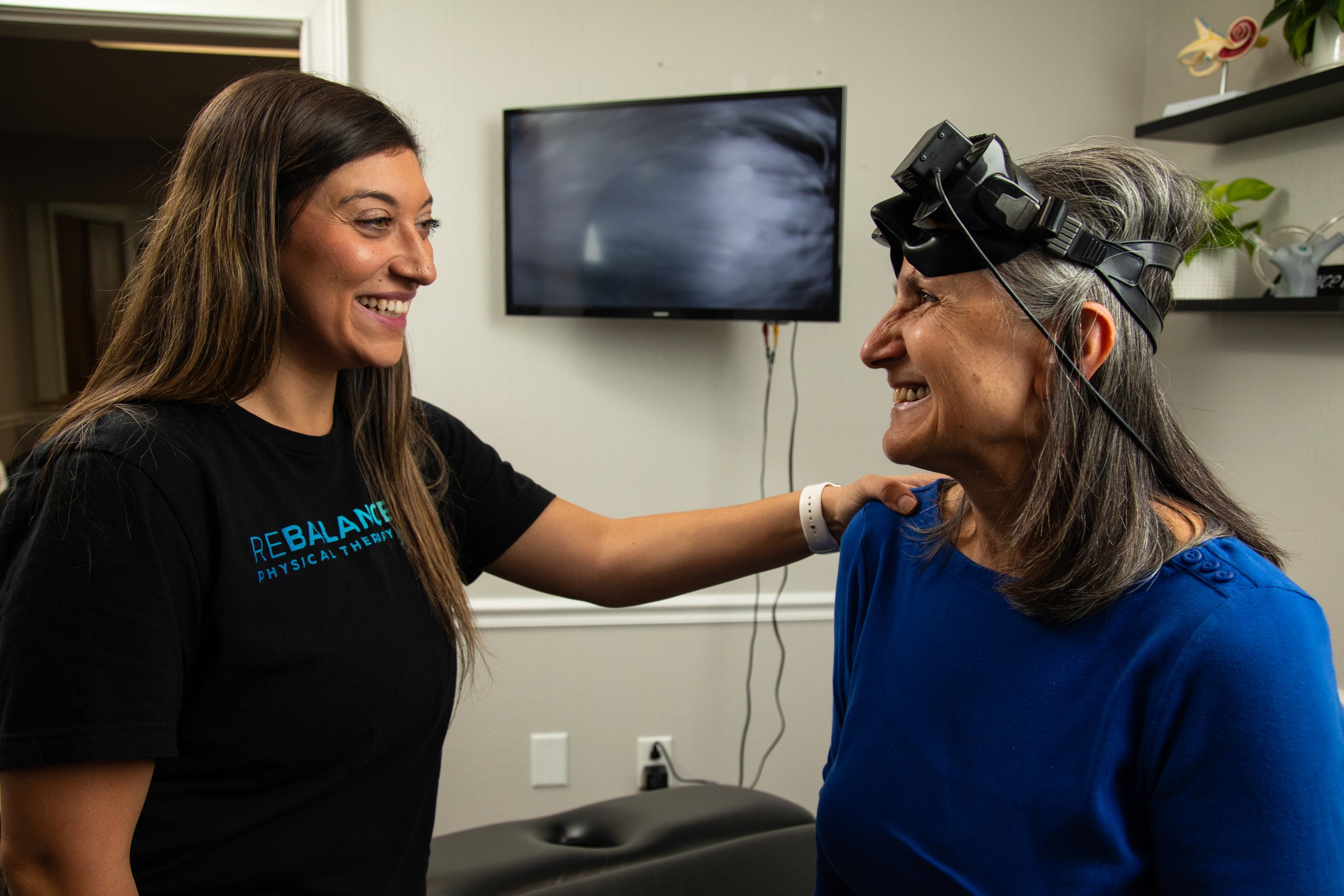What is positional vertigo, aka, BPPV? Let’s learn how to conquer it!
What Is It?
BPPV is the formal term for a specific vestibular disorder in which sudden, temporary bouts of dizziness is induced with changes in body position. It is typically characterized by a “room spinning” sensation that lasts for seconds to 2 minutes upon changing positions. People who suffer from BPPV most often notice BPPV symptoms, including dizziness/vertigo,, imbalance, and nausea, with functional movements such as:
· Head turns
· Rolling over in bed
· Bending forward to tie the shoes
· Leaning back to wash hair in the shower
· Going into downward dog or transitioning from downward dog to cobra pose during yoga routine
The Anatomy of BPPV
BPPV is a disorder of the vestibular system. Our peripheral vestibular systems are located within the inner ear and are made up of 5 organs – 2 otolith organs and 3 semicircular canals:
1. Utricle – dictates forward and backward acceleration
2. Saccule - dictates up and down acceleration
3. Anterior semi-circular canal
4. Posterior semi-circular canal
5. Horizontal semi-circular canal
BPPV can occur in any of the 3 semicircular canals. Think of the 3 canals as individual pipes of a plumbing system that all dump into the same toilet bowl. At the bottom of the toilet bowl, there are calcium carbonate crystals called “otoconia” that are held down by ligaments.
If something causes those crystals to dislodge, the crystals may begin free-floating in any 1 of the 3 semicircular canals. These crystals being in the wrong place will send messages to the brain that you are moving when you are not, and therefore you will feel dizzy/have vertigo the entire time those crystals continue to free-float in those canals. Until those crystals are returned to the toilet bowl where they belong, one will continue to have vertigo symptoms.
What are Risk Factors for BPPV?
Research is still unclear about the exact causes of BPPV or what may cause the crystals to get dislodged. However, we do know that the peak incidence of BPPV is 50 years old, and BPPV significantly increases in the older population (60+ yo). Coinciding with older age, osteopenia and osteoporosis can also be potential risk factors for increased BPPV.
BPPV in younger adults is commonly associated, but not limited to, a head trauma or post dental work or surgery where the head is maintained in more extreme positions (extension) for prolonged periods. Women are also more likely to get BPPV than men with an 11:1 ratio.
Due to viral infections being able to cross the blood-brain barrier and therefore affecting several cranial nerves (including, but not limited to, Cranial Nerve 8: the vestibulcochlear nerve), those affected with viral infections such as herpes zoster or COVID19, seem to also be at greater susceptibility to developing BPPV.
Diagnosis and Treatment for BPPV
90% of all patients seen for vertigo are BPPV-related. One third of all medical office visits for vertigo symptoms are due to BPPV diagnosis. Though BPPV can be extremely scary, frustrating, and cause fear of movement, it is not a life-threatening or serious condition. A true BPPV diagnosis is CURABLE with canal repositioning maneuvers.
Canal repositioning maneuvers are typically performed by ENTs, audiologists, or physical therapists. These maneuvers use gravity through sequential head and body positional changes in order to get the crystals out of the affected semicircular canal and back into the utricle (or toilet bowl) where they belong.
In my personal opinion, it is always best to see a licensed healthcare professional, especially someone who has more experience with vestibular dysfunction, to perform a specific canal repositioning maneuver. When trying to do it independently at home, there is too much room for error as one may position incorrectly, treat the wrong ear, or try to correct the wrong canal. There is a 22% retroversion rate, in which it is possible to drop the crystals into a different canal instead of dumping them back into the toilet bowl as the maneuver should.
For true BPPV, canal repositioning maneuvers should be performed until symptoms resolve. On average, this takes between 2-4x for true BPPV without any other factors or disorders influencing symptoms.
Conclusion
BPPV is the most common peripheral vestibular disorder causing sudden, short bouts of vertigo that is induced by positional changes. Although it can significantly impact quality of life and can lead to increased risk of falls and injury, it is CURABLE by canal repositioning maneuvers by an experienced healthcare professional.
Don’t let BPPV stay longer than it needs to. Even though it is a miserable condition, it can typically be fixed quickly with a simple solution. Visit the Vestibular Disorders Association (VEDA) website (link below) for a list of qualified healthcare providers located within your area. If you are in the Upstate of SC, we at Rebalance PT would love to get you scheduled right away!
Sources:
Yetiser S, Ince D. Demographic analysis of benign paroxysmal positional vertigo as a common public health problem. Ann Med Health Sci Res. 2015 Jan-Feb;5(1):50-3. doi: 10.4103/2141-9248.149788. PMID: 25745577; PMCID: PMC4350063.
Di Mauro P, La Mantia I, Cocuzza S, Sciancalepore PI, Rasà D, Maniaci A, Ferlito S, Tundo I, Anzivino R. Acute Vertigo After COVID-19 Vaccination: Case Series and Literature Review. Front Med (Lausanne). 2022 Jan 6;8:790931. doi: 10.3389/fmed.2021.790931. PMID: 35071270; PMCID: PMC8770332.
“Find a Vestibular Specialist.” Vestibular Disorders Association, 11 May 2023, vestibular.org/healthcare-directory/.



